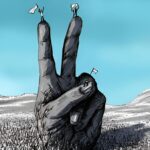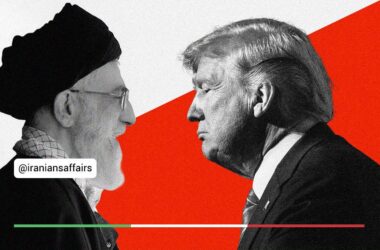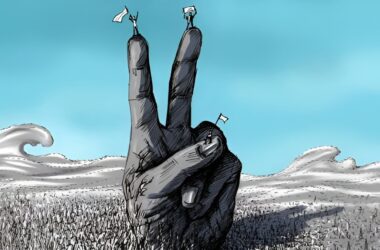One of the most frequently asked and serious questions in Iran is who has the capacity and eligibility to lead and represent the opposition and dissatisfied segments of Iranian society. This question has become even more significant with Prince Reza Pahlavi’s announcement of his readiness to lead the transitional period.
Elections, surveys, public conferences, social media support, endorsement of affiliated institutions, transparent financial contributions, and other similar measures can all indicate the acceptance of an individual or political group. However, in Iran’s closed society, none of these methods can serve as reliable and valid indicators. Establishing political and social institutions is prohibited for many viewpoints, especially for the opposition. Moreover, activities such as financial support, social media engagement, and media opposition have been criminalized. Elections and surveys are also limited to factions aligned with the regime under such constraints.
In liberal democracies, the position and acceptance of individuals and groups are determined through clear mechanisms. Free elections provide a genuine means to measure public satisfaction and approval. Some even equate the concept of “expressed real consent” with elections and referendums, using it as a basis for legitimacy. Others employ the concept of trust, considering it a more precise framework than legitimacy. The existence of political parties simplifies the process even further, as building and maintaining trust requires a collective sensitivity among all party members toward their leaders and peers.
In today’s Iran, however, political opponents and critics are either completely excluded from the regime’s tolerated opposition or operate within a highly controlled environment. This controlled sphere, described by one dissident as the “domain of permissible dissent,” is entirely managed, guided, and even orchestrated by the regime. In such an atmosphere, not only political activities but also social, artistic, and even athletic institutions and endeavors are closely monitored and regulated.
It is a common belief that power shapes public opinion. Along these lines, media are considered central to shaping public perceptions and establishing authorities. For years, official media outlets determined intellectual, social, and political reference points. While the advent of social media has weakened the dominance of traditional media, the media landscape as a whole has gained even greater influence in shaping authorities. Today, institutions like political parties, universities, associations, and volunteer groups no longer hold the same status as before. Wealthy individuals, who historically held influence, now increasingly focus their resources and attention on the media. One might argue that in today’s world, whoever controls the media dictates the authorities.
The power of media sometimes fosters misconceptions. A television host or analyst might aspire to guide society based on their media popularity, equating media success with trustworthiness. This phenomenon is even more pronounced among social media celebrities, who often view themselves as trusted representatives of the people. However, society, despite its emotional and impulsive tendencies, ultimately possesses a collective rationality. For instance, the public may admire an athlete as an accomplished sportsperson but not see them as a competent actor or singer. Similarly, while a model may excel at promoting beauty products, people will not rely on them for medical advice. Educating children, for example, is not something society entrusts to comedians or social media influencers. Though propaganda and manipulation may cause confusion at times, freedom of the press eventually mitigates such effects.
These issues are not unique to Iranian society. The global entertainment industry has increasingly spotlighted actors, athletes, models, and comedians, many of whom now boast more followers than official political entities. In Iran, the most-followed figures on Instagram are often comedians and entertainers, with actors and athletes also commanding significant attention. Some argue that this social and political reality should be leveraged for advancing broader objectives. Elections worldwide have also become fertile grounds for celebrity involvement. In the United States, for example, it is not uncommon for the final days of a campaign to feature celebrities from the entertainment industry. Elsewhere, a porn star may be invited to speak at a university to support political causes like Palestine. Celebrity culture is inherently a recent phenomenon, thriving on visibility—whether through fame or infamy.
Returning to the central question: Who is eligible to represent and lead politically? Can an individual’s popularity on social media translate into a legitimate social and political standing, allowing them to influence political thought or represent the public? It appears this is possible but limited. Just as major news networks wield significant influence, their impact diminishes over time. People may cheer for influencers, comedians, singers, actors, and athletes, but they turn to reputable news outlets for information. While sensationalism may sometimes deter fact-checking, when critical matters arise—such as health concerns—individuals inevitably seek out the most credible sources. Popularity builds trust, but that trust has its bounds.
In closed societies under totalitarian or post-totalitarian regimes, these dynamics may spill over into social and political spheres. Due to the suppression and manipulation of political, social, and cultural spaces, visibility, popularity, credibility, and their safe continuance are often under the control of power structures. Issues and roles can differ significantly from those in open societies. Here, the concept of political opposition itself carries unique implications. Unlike open societies with political factions, closed societies grapple with defining and acknowledging political dissenters, which is essential for reaching actionable conclusions.
Political opposition itself is not monolithic. Some represent specific demands, whether professional, ethnic, gender-related, or lifestyle-based. Others advocate for fundamental changes to the political system or even regime change. Certain groups champion social and cultural values, while others focus on economic issues, pursuing equitable economic policies or advocating for systemic reforms. Some promote specific ideas, such as forming alliances with other nations or adopting certain geopolitical stances, while others might campaign for environmental protection or nuclear policy changes.
Victim groups and their families also play unique roles. Families of political prisoners or those who have faced systemic violence or exclusion often become key voices in the broader struggle for justice. For instance, in the absence of equitable living conditions, almost anyone in Iran can become a human rights activist or a symbol of resistance due to symbolic or incidental acts.
The sheer variety of opposition groups complicates the issue of political representation. From women’s movements and ethnic minorities to justice-seekers and advocates of national identity, the landscape is diverse. A focused examination of these groups, or a concentration on broader political ideas such as democratization, national sovereignty, or peace-building, can help delineate the contours of political representation.
For instance, the representation of women, one of the most challenging issues in Iran, encompasses diverse views. While current attention largely centers on opposition to mandatory hijab, historical struggles for women’s liberation and legal equality underscore different priorities. Some view seasoned leaders from previous generations as more qualified, while others see emerging activists, media figures, or prominent campaigners as better suited for leadership roles. However, media trends, dominant discourses, and even sheer luck often influence these perceptions.
To identify political representatives and leaders, one must understand the prevailing political, social, and economic dynamics. Representation and leadership must arise from the broader discourse and its grassroots supporters. Political actors with credible records, capable of mobilizing resources, building coalitions, advancing discourse, and demonstrating consistent commitment to their cause, are better positioned to take on these roles.
In Iran’s closed society, these dynamics become even more challenging. However, simplifications can help navigate this complexity. If the dominant narrative is nationalism or a desire for normalcy, freedom, and democracy, the criteria for identifying representatives may become clearer. A serious focus on political order—whether liberal democracy, monarchy, or any other system—could further streamline this process. Historical experiences suggest that where confusion and fragmentation prevail, true political representation and leadership struggle to emerge.
Understanding these dynamics may help clarify whether figures like Prince Reza Pahlavi can effectively lead and represent political opposition in Iran’s current landscape. A careful review of the factors that have shaped this discourse may address obstacles to political representation, enabling progress toward meaningful change.







